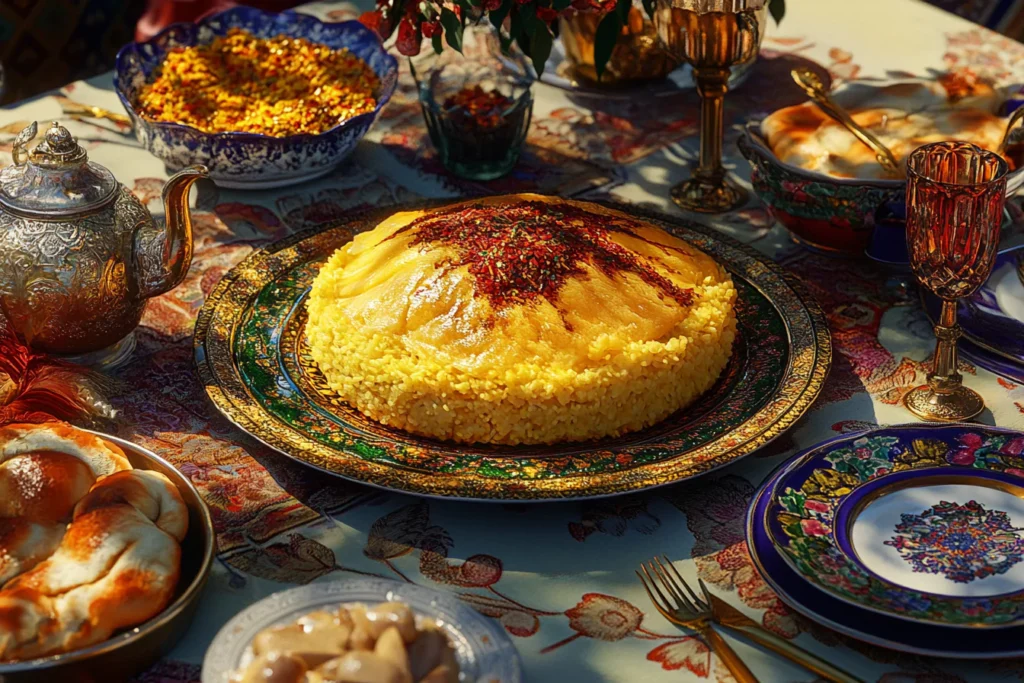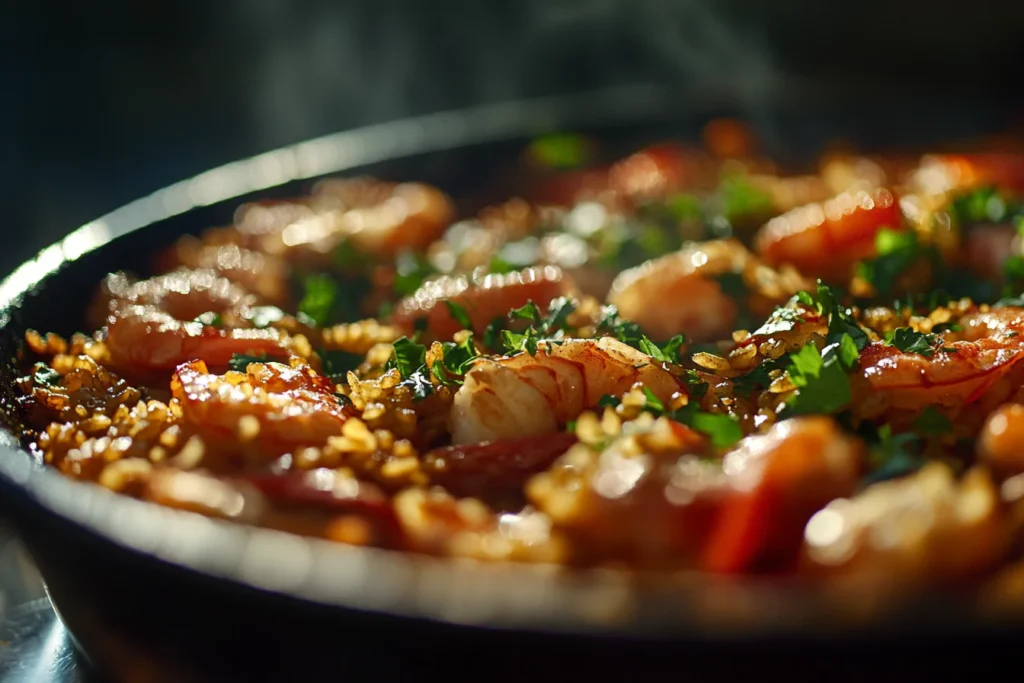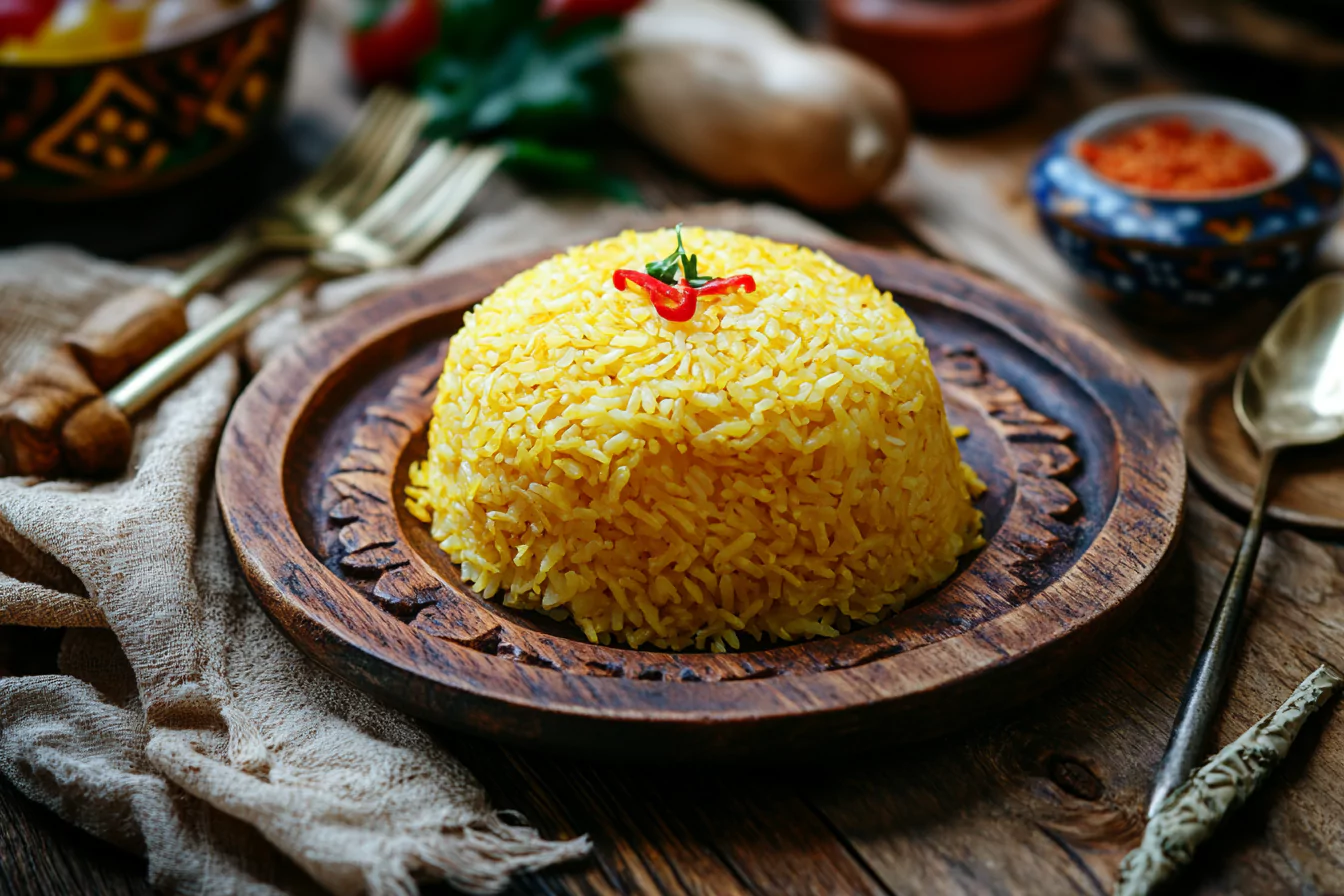What is the Crispy Bottom of Rice Called?
Crispy rice bottoms are loved by people all over the world. For example, in Persian cooking, people enjoy the golden tahdig. In the same way, Spanish cooks love when paella reveals its crispy socarrat, while Koreans prepare their favorite nurungji. This worldwide trend shows how heat can work wonders on simple ingredients.
If you’re inspired to try making crispy rice at home, we’ve got you covered. Check out our easy and delicious crispy rice recipe for a step-by-step guide. Or, if you’re looking for tips on achieving the perfect crunch, learn how to make rice crunchy with expert techniques.
In this article, we’ll look into the history, cooking methods, and cultural importance of crispy rice bottoms. By the end, you’ll not only know what the crispy bottom of rice is called, but you’ll also want to make it yourself.
Introduction to the Crispy Bottom of Rice
What Makes it Special
The crispy bottom of rice turns a simple dish into something amazing. However, this golden crust doesn’t happen by chance—it takes effort, care, and a little patience. All around the world, people enjoy this dish, which is a sign of traditional cooking and skill. Its crunch and rich flavor often steal the show at meals.
Using only rice, water, oil, and sometimes salt, cooks can make this delicious dish. Even so, its simple ingredients hide just how special it is, offering a texture and flavor that everyone loves.
Importance Across Cultures
So, what do different cultures call the crispy bottom of rice? For instance, in Iran, families gather around tahdig dishes, enjoying its golden crunch. At the same time, Spaniards prize socarrat as the best part of a good paella. Also, Koreans toast nurungji for its nutty taste, while Ecuadorians proudly serve cocolón. Each culture adds its own style, but the love for it is universal.
Beyond the plate, crispy rice bottoms bring back memories. As a result, they remind many people of meals shared with family and friends. Whether it’s the star of a meal or just a side dish, it shows the warmth and comfort of home cooking.
Names of Crispy Rice Bottoms in Different Cultures
Tahdig (Persian Cuisine)

In Persian cooking, tahdig has a special place. The name, meaning “bottom of the pot” in Farsi, clearly describes this crispy rice layer. Also, Persians often flavor it with saffron or yogurt to make it tastier. At gatherings, they proudly serve tahdig as a golden, crunchy dish that shows their cooking skills.
Making tahdig takes careful steps. Cooks wash and partially cook basmati rice, then mix it with oil or butter in a sturdy pan. Then, they steam the rice slowly until the bottom turns crispy. Because of this, in Persian homes, tahdig is more than food—it’s a tradition.
Check out this crispy rice recipe for more tips.
Socarrat (Spanish Paella)

The Spanish word socarrat refers to the crunchy rice layer in a paella. Making it requires the right heat and timing. As the rice cooks, it soaks up the rich broth, and the bottom layer turns golden and crispy.
In Spain, people see socarrat as a sign of a good paella. Unlike tahdig, they don’t serve it alone; they enjoy it as part of the whole dish. Because of this, the crispy layer adds a nice contrast to the soft rice, creating a perfect mix of textures and flavors.
Nurungji (Korean Cuisine)
In Korea, nurungji—the toasted rice at the bottom of a rice cooker—is both a snack and an ingredient. Koreans enjoy it as crispy snacks or turn it into porridge. To make nurungji, they cook rice a little longer to create a golden crust with a nutty taste.
Traditional Korean households often reuse nurungji in soups or teas. This habit, in turn, shows the creativity of their cooking.
Other Names and Variations
This loved crispy rice layer has different names around the world. For example, in Ecuador, it’s called cocolón, while in Puerto Rico, it’s pegao. These names, however, show how much people everywhere enjoy this crunchy treat, adding their own twists.
How is the Crispy Rice Bottom Made?
Key Ingredients and Tools
The magic of crispy rice lies in its basic method. All you need is rice, oil or butter, and water. But, picking the right rice matters. Long-grain rice like basmati works best for tahdig and socarrat, while short-grain rice suits Korean nurungji.
The tools you use matter too. For instance, sturdy pans or non-stick pots spread heat evenly, which helps the bottom crisp without burning.
Cooking Techniques
Making crispy rice needs focus and care. First, rinse and partially cook the rice. Then, layer it into a greased pot. While cooking, leave it alone over medium-low heat so the bottom forms a golden crust, while the top steams.
For paella, cooks simmer the rice in flavorful broths, which add taste and caramelize the bottom layer. In the same way, Korean cooks leave rice in a rice cooker for a few extra minutes to make nurungji.
Common Mistakes and Tips
Burning the rice or missing the crust can frustrate beginners. To avoid this, use medium heat and don’t stir the rice. Also, adding yogurt or saffron to the rice can help make a thicker, tastier crust.
Get more tips at how to make rice crunchy.
Cultural and Social Relevance
A Symbol of Home Cooking
The crispy bottom of rice shows the heart of home cooking. In many cultures, families love this dish because it brings back memories of meals and good times together. For example, in Iran, people often serve the first piece of tahdig to honored guests to show respect and kindness. Likewise, Korean families share nurungji to build closer bonds and celebrate together.
In fact, food brings people together, and the crispy rice bottom shows this connection perfectly. Its smell, texture, and taste take you back to a warm kitchen filled with laughter and clinking plates.
A Shared Culinary Delight
People everywhere enjoy the crispy bottom of rice, even though it has different names and ways of cooking. For example, in Spain, it’s called socarrat, and in Puerto Rico, it’s known as pegao. No matter the name, everyone loves its crunchy texture and the good feelings it creates.
Also, this dish starts conversations and creates connections. When people share recipes, tips, and stories about crispy rice, they often bond with others. Families, friends, and even strangers feel closer through their shared love for this dish. Chefs and food bloggers also talk about the joy of making this crunchy treat.
Its Role in Celebrations and Feasts
The crispy bottom of rice often plays a big role in celebrations in many cultures. For instance, Persian weddings serve tahdig, and Korean festive meals feature nurungji. The dish’s golden color makes the meal feel special, and its crunch goes well with softer dishes on the table.
Health and Nutritional Value
Nutritional Components
The crispy rice bottom might seem rich, but it has some health benefits too. Since it’s made from rice, it provides energy through carbohydrates. Also, when you cook it with ingredients like saffron, yogurt, or broth, it adds extra flavor and nutrients.
However, enjoying this dish in small portions helps you enjoy it without feeling guilty. The crispy layer often uses oil or butter, so eating it in balance is a good idea.
Tips for Healthy Cooking
To make it healthier, use whole-grain or brown rice instead of white rice to get more fiber and nutrients. Also, try olive oil or cooking spray instead of butter to reduce unhealthy fats while keeping the flavor. Keeping your portions small lets you enjoy the crunch without overeating.
If you’d like lighter rice-based dishes, check out recipes like healthy rice alternatives.
The crispy bottom of rice shows how much care goes into cooking. So, by changing the ingredients and cooking methods, you can enjoy its unique crunch while staying healthy.
Frequently Asked Questions (FAQs)
What is the crispy bottom of rice called in Persian cuisine?
In Persian cooking, people call the crispy bottom of rice tahdig. This golden layer, often flavored with saffron, yogurt, or potatoes, is the highlight of Iranian meals. Also, Iranians see tahdig as a cooking skill, and many take pride in serving it perfectly golden and whole.
Is the crispy rice bottom healthy to eat?
The crispy rice bottom tastes amazing but can have extra calories and fat depending on how you make it. But, you can make it healthier by using oils like olive oil and picking whole-grain rice. So, eating it in small amounts lets you enjoy the crunch without risking your health.
Can the crispy rice crust be made with different types of rice?
Yes, you can make the crispy rice bottom with different types of rice. Long-grain kinds like basmati work great for tahdig, while short-grain rice works better for Korean nurungji. This way, each type gives a unique texture and taste.
How can I avoid burning the rice while making the crust?
To avoid burning the rice, cook it on low to medium heat in a thick pan. Also, use enough oil and watch the cooking time carefully to get that perfect golden crust without burning it.
Conclusion and Final Thoughts
Summarizing the Global Love for Crispy Rice
From Persian tahdig to Korean nurungji, people everywhere love the crispy bottom of rice. Its charm comes from its simplicity—heat turns rice into a tasty, crunchy treat. When we look deeper, asking what is the crispy bottom of rice called shows a shared love for this amazing dish.
Why You Should Try Making It Yourself
If you haven’t made crispy rice yet, start now! Master the golden saffron crust of tahdig or the browned base of a Spanish paella. Plus, this dish helps you learn a fun cooking skill while enjoying a delicious crunch. With a little practice, you’ll soon be enjoying this treat at home.
Crispy rice bottoms are more than just food—they show the creativity and care behind cooking. So, grab your favorite pot, gather your ingredients, and make your own crispy dish. At the same time, share it with family and friends because this dish tastes best together.


1 thought on “What is the Crispy Bottom of Rice Called? Unveil Its Hidden Secret”